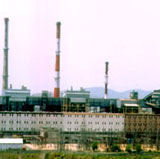UDAY – Another Power Sector reform in India
India recently restructured its massively sick power distribution sector for a 3rd time in the last 12 years. This sector has been chronically sick, with debt of more than $50 billion and causing a lot of concern for the overall electricity industry in India. The distribution companies are owned by the state governments and supply power to cities and rural areas. The electricity supply is generally subsidized heavily and the discoms do not get the subsidies from the government on time. They also have to bear 25-30% losses, as power is stolen and the governments do want to curtail this activity due to corruption and political patronage. Besides, these organizations are also extremely bad run, inefficient and cesspools of corruption.
A major power reforms exercise in 2003 brought some relief, with unbundling of the power sector and creation of state electricity regulations who would decide on the electricity rates. However the governments have made a mess of it, giving unsustainable subsidies and not increasing rates. As a result billions of dollars in losses are generated by these discoms even today. These companies now run on loans, which have become a big NPA problem for India’s state owned banks as well. So not only is India’s power sector facing issues but also the banking sector.
Read about the major Power Companies in India here.
There was an attempt made by the last UPA government to reform the sector, but like most of its initiatives it also fell flat. Now the new NDA government is also making a brave attempt codenaming the reforms as UDAY. However, no new radical effort has been made except for moving the discom debt onto the balance sheet of the respective state governments. This would lower the interest burden. The main problem is the politics behind the electricity sector. The political parties do not want to raise electricity rates to viable ones, massively wasting subsidies to farmers. The central government does not have any power to punish these state governments from bankrupting these discoms or preventing the huge power thefts. All they can do is provide carrots in the form of additional money for capex. But when political parties are facing elections, they don’t really care much about the economy in the short term. The power sector in India faces the worst disadvantages of democracy.
In my view, UDAY is a good step but execution is the key in reforming this weak link in India’s power sector. Solar power is critically dependent on a well-functioning distribution system, which can make payments for the solar power sold. The discom distress is the biggest risk facing the growth of the solar energy industry in India today. It remains to be seen whether the new Modi government can make the reforms work where the previous central dispensations failed.
Google+


